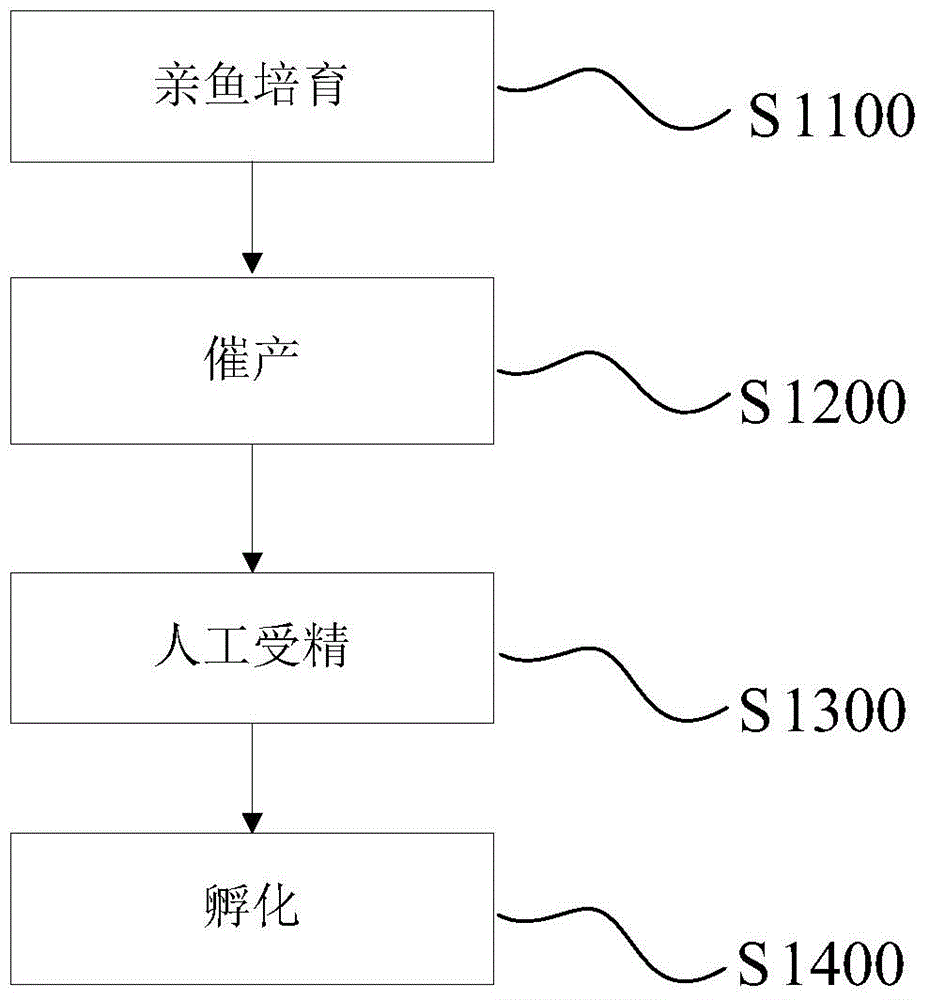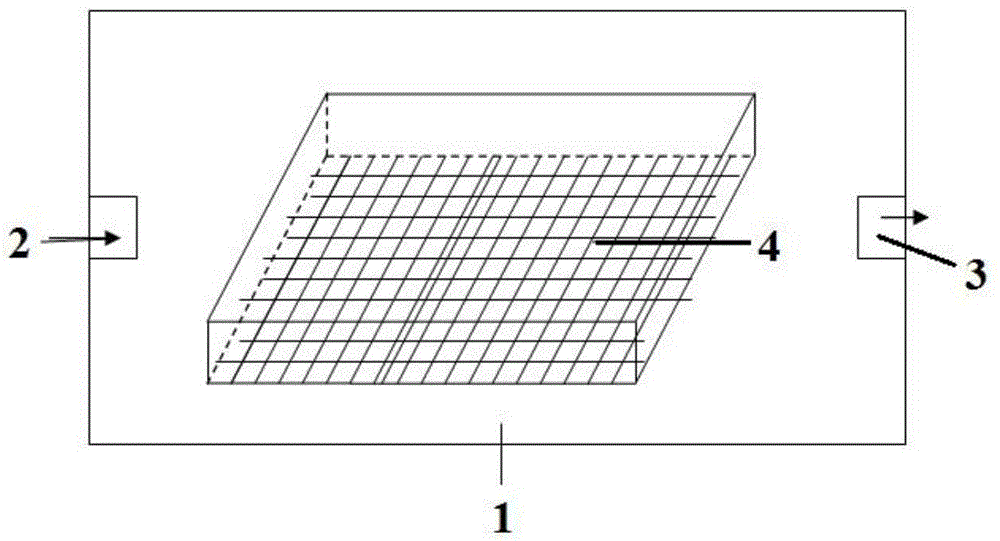Tor sinensis artificial breeding method
A technology of artificial breeding and fish formation, applied in fish farming, application, climate change adaptation, etc., can solve problems such as research lag, and achieve the effect of promoting fishery development
- Summary
- Abstract
- Description
- Claims
- Application Information
AI Technical Summary
Problems solved by technology
Method used
Image
Examples
Embodiment Construction
[0023] The present invention will be further described below in conjunction with the accompanying drawings and specific embodiments.
[0024] The invention provides an artificial propagation method for Chinese knotfish. The artificial propagation method has high fertilization rate and hatching rate and good ecological and economic benefits.
[0025] figure 1 A schematic flow chart of the artificial propagation method of Chinese knotfish is shown. Such as figure 1 As shown, the method includes the following steps:
[0026] Broodstock breeding step S1100: selecting 1.5-1.7 kg male fish at 3 winter age and 2.9-3.1 kg 5 winter-age female fish as brood fish, and placing them in a breeding tank for 2 months of cultivation;
[0027] Oxygenation step S1200: in October-November every year, inject oxytocic agent into female fish to induce labor;
[0028] Artificial insemination step S1300: 15-16 hours after induced labor, squeeze out the eggs of the female fish and the sperm of the ...
PUM
 Login to View More
Login to View More Abstract
Description
Claims
Application Information
 Login to View More
Login to View More - R&D
- Intellectual Property
- Life Sciences
- Materials
- Tech Scout
- Unparalleled Data Quality
- Higher Quality Content
- 60% Fewer Hallucinations
Browse by: Latest US Patents, China's latest patents, Technical Efficacy Thesaurus, Application Domain, Technology Topic, Popular Technical Reports.
© 2025 PatSnap. All rights reserved.Legal|Privacy policy|Modern Slavery Act Transparency Statement|Sitemap|About US| Contact US: help@patsnap.com


